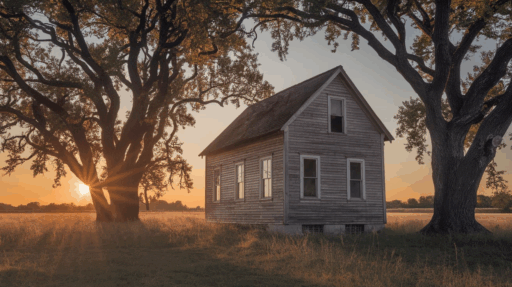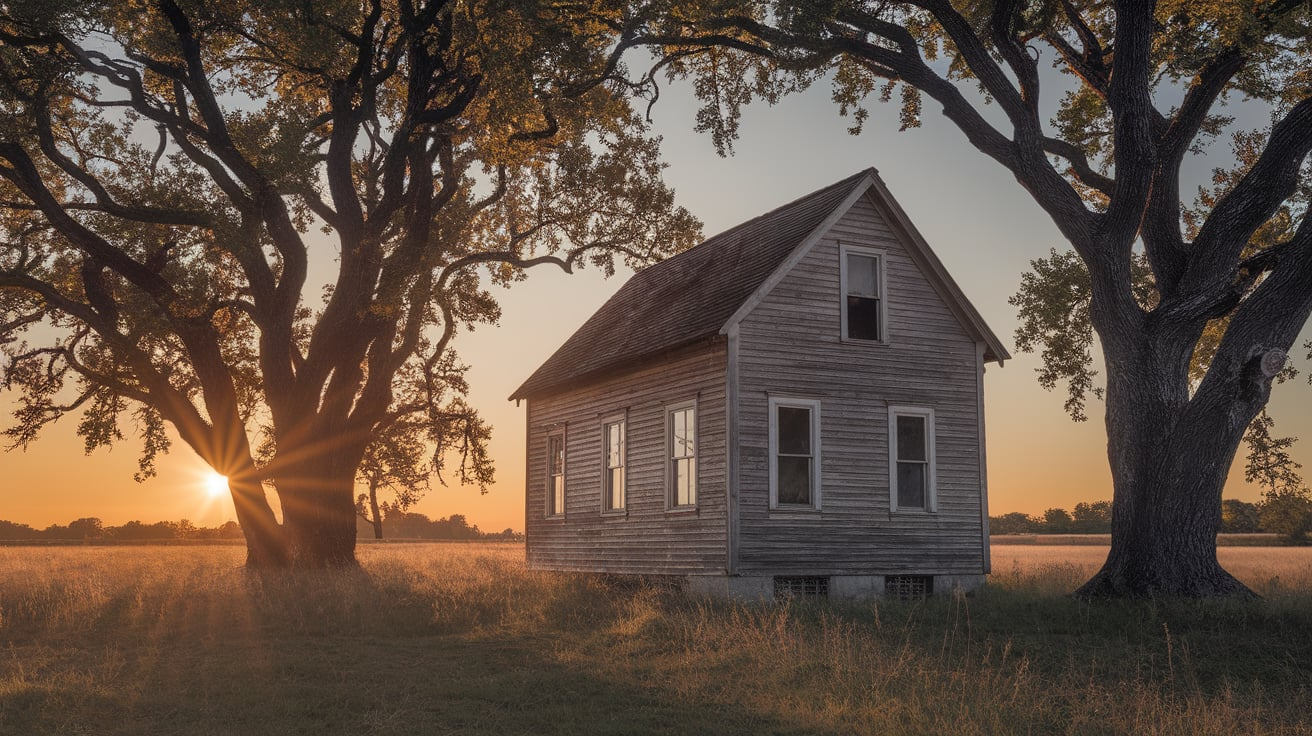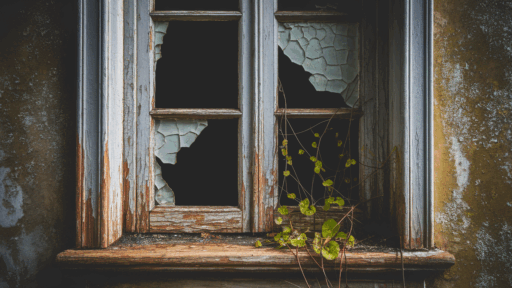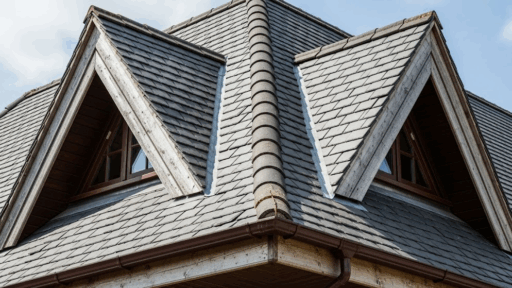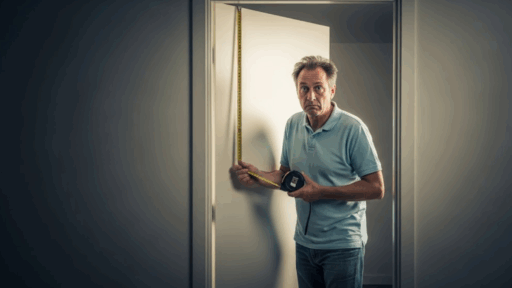Creaking represents more than just random noise; it’s a complex communication system of residential structures and environmental interactions.
Scientific understanding changes our perception of house sounds from mysterious phenomena to charming architectural conversations.
Homeowners can now appreciate these acoustic signals as natural expressions of building materials and environmental conditions.
Each creak tells a unique story of temperature, humidity, and structural adaptation over time.
Embracing this knowledge turns potentially frightening sounds into a deeper connection with our living spaces.
A Real-Life Mystery for Many Homeowners
Common Reasons Behind House Creaking
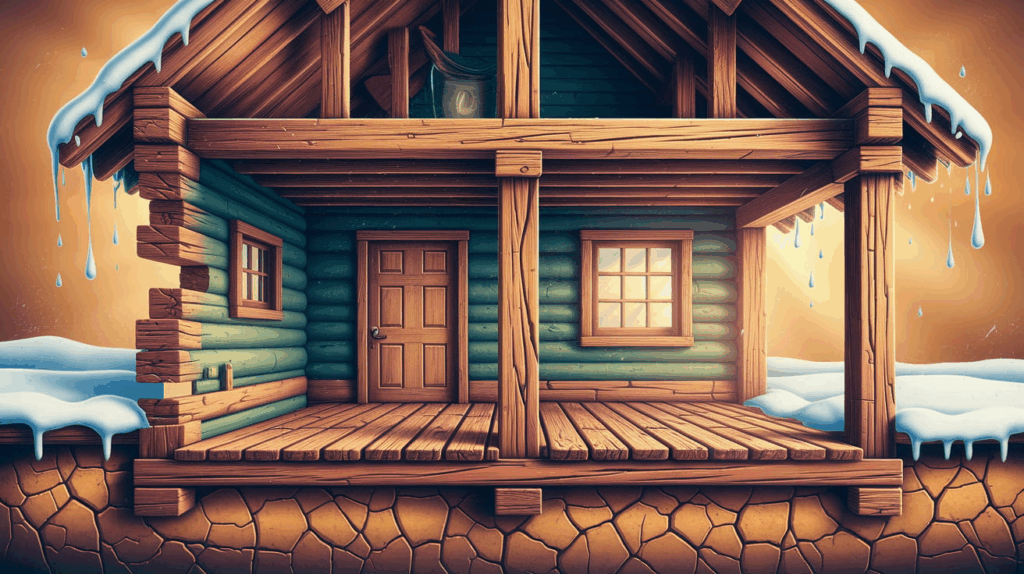
Home creaking is not a sign of impending doom, but rather a complex symphony of natural home behaviors.
Multiple factors contribute to these intriguing acoustic phenomena, which puzzle and intrigue homeowners across various environments and building types.
Key reasons for house creaking include:
- Temperature fluctuations cause building materials to expand and contract dramatically
- Natural foundation settling creates subtle shifts in structural support systems
- Wood’s moisture content changes with humidity, producing unexpected sounds
- Loose floorboards and worn-out nails generate creaking when pressure is applied
- Roof structures and attic spaces move subtly with wind and weather changes
- Older homes experience more pronounced wear and tear from decades of use
Understanding these reasons helps homeowners distinguish between normal house sounds and potential structural concerns.
Seasonal Creaking: What Changes in Summer vs. Winter?
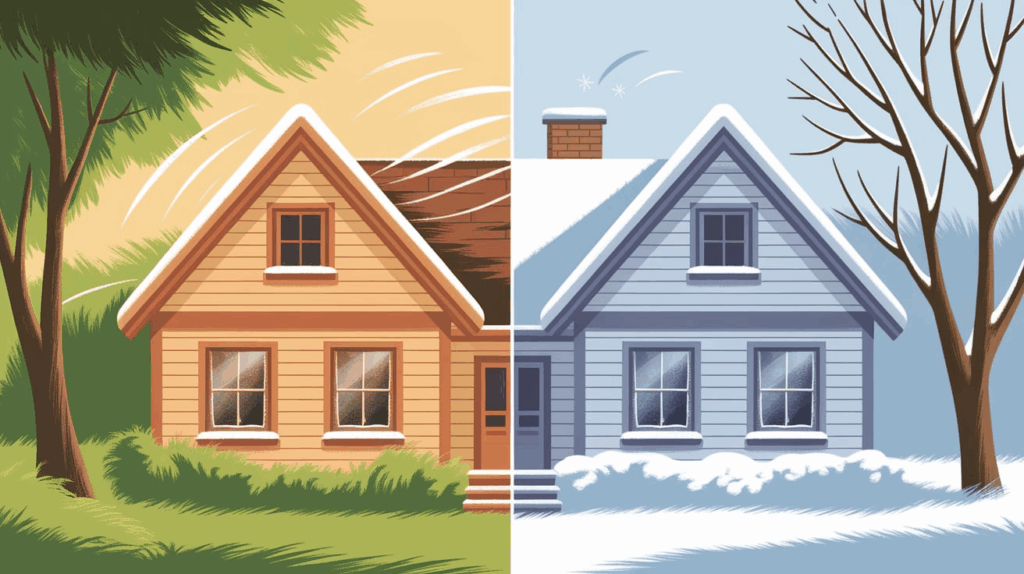
Home creaking changes with the changing seasons, revealing the dynamic nature of residential structures.
Different weather conditions dramatically impact how houses sound and behave throughout the year.
Understanding these seasonal variations helps homeowners distinguish between normal structural responses and potential maintenance concerns.
| SEASON | TEMPERATURE | MATERIAL BEHAVIOR | TYPICAL CREAKING CHARACTERISTICS |
|---|---|---|---|
| Summer | High Heat | Maximum Expansion | Frequent, louder creaks during the heat of the day |
| Winter | Low Temperatures | Maximum Contraction | Sharp, crisp noises—especially at night |
| Spring | Moderate Fluctuations | Gradual Material Adjustment | Intermittent and softer creaking |
| Autumn | Cooling Temperatures | Subtle Structural Shifts | Occasional, mild creaks as temperatures drop |
Each season brings its unique acoustic signature, turning homes into living, breathing environments that communicate through subtle sounds.
Community Anecdotes That Might Sound Familiar
Every home has a story, whispered through its walls and floors in creaks and groans.
These sounds are more than just random noises—they’re the language of living spaces.
Homeowners across the country have learned to listen and interpret these subtle communications.
Each creak carries a narrative waiting to be understood.
- “I always hear creaks around 2 AM like someone’s walking through the hallway!”
- “Our house groans every time the weather shifts from hot to cold outside.”
- “We blamed ghosts for months until a contractor explained it was the heating ducts.”
- “My grandmother used to say the house ‘talks’ at night—now I understand what she meant.”
- “The first time I heard our new home creak, I thought something was seriously wrong.”
These stories remind us that homes are living, breathing entities with personalities all their own.
They connect us to our living spaces in unexpected ways.
Creaks become less frightening and more engaging with understanding.
Creaking vs. Structural Issues: When Should You Worry?
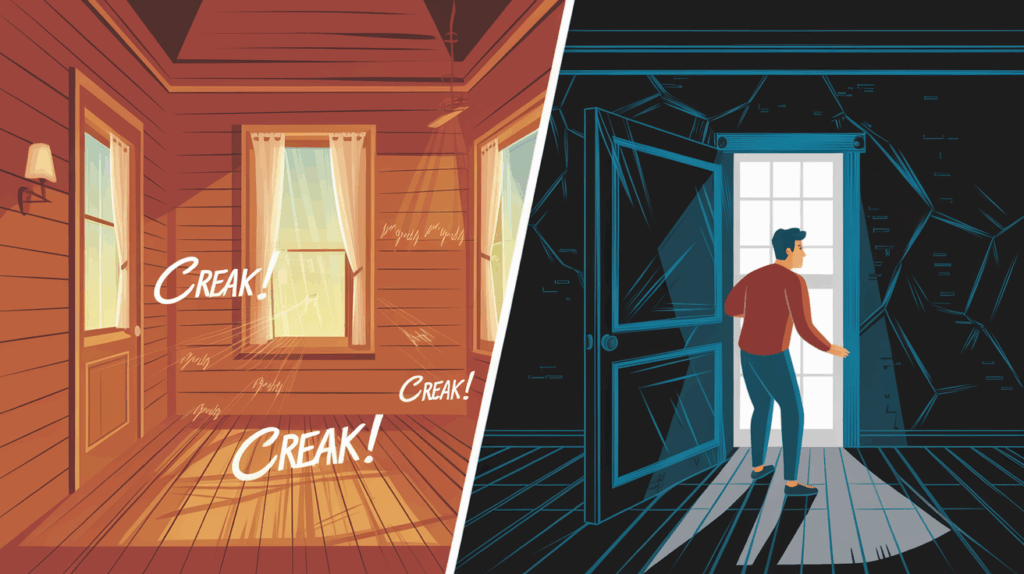
Home creaking presents a complex puzzle that challenges even the most experienced homeowners and property maintenance experts.
Understanding the difference between normal house sounds and potential structural problems requires careful observation and nuanced interpretation.
Some noises indicate natural building processes, while others may signal underlying issues that require professional attention.
Homeowners must develop a keen ear and an observant eye to distinguish between harmless acoustic events and serious structural concerns.
The key lies in careful monitoring, context, and occasional expert consultation to ensure home safety and integrity.
Myths & Misunderstandings About Creaky Homes
Home creaking has long captured human imagination, changing ordinary structural sounds into mysterious narratives.
Popular myths about home creaking include:
Myth 1: “Creaks mean ghosts are walking”
Reality: Natural building movements, not supernatural events
Myth 2: “Only old homes creak.”
Reality: New construction experiences creaking, too
Myth 3: “Creaks mean foundation problems.”
Reality: Most creaks are normal structural responses
Simple DIY Fixes That Help
Homeowners can effectively reduce house creaking through several practical and straightforward techniques.
Adding humidity control devices like humidifiers or dehumidifiers helps stabilize moisture levels in wooden structures.
Reinforcing loose floorboards and stairs using appropriate screws provides additional structural support and reduces movement.
Lubricating metal joints, door hinges, and other connection points minimizes friction-related noises.
Installing proper expansion gaps in flooring allows natural material movement and prevents unnecessary stress.
These simple interventions can dramatically improve a home’s acoustic environment with minimal technical expertise.
When to Call a Professional
Home maintenance requires a careful balance between DIY solutions and professional expertise for complex structural challenges.
Some creaking sounds exceed simple home repairs and demand specialized attention from experienced professionals.
Homeowners should develop a keen understanding of when house noises indicate potential serious structural issues.
Recognizing the subtle differences between normal building sounds and warning signs can prevent costly future repairs.
Professional intervention becomes crucial when home creaking suggests underlying problems beyond standard maintenance capabilities.
Summing It Up
Creaking represents more than just random noise—it’s a complex communication system of residential structures and environmental interactions.
Scientific understanding changes our perception of house sounds from mysterious phenomena to charming architectural conversations.
Homeowners can now appreciate these acoustic signals as natural expressions of building materials and environmental conditions.
Each creak tells a unique story of temperature, humidity, and structural adaptation over time.
Embracing this knowledge turns potentially frightening sounds into a deeper connection with our living spaces.

